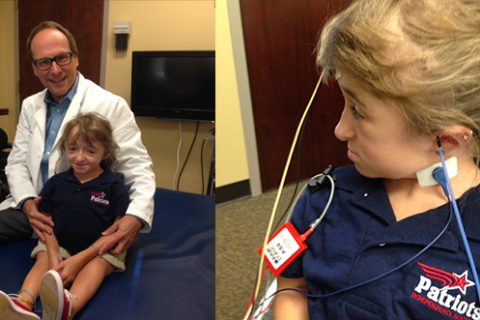
VIDEO: Basilar Invagination in Osteogenesis Imperfecta or BPPV ?
Published on: October 28, 2014
This charming 14 year-old female with Osteotogenesis Imperfecta (OI), who is pre-pubescent, has a radiographically confirmed basilar invagination for many years. In addition, she has experienced over 50 fractures related to her OI condition. There is neither a history of migraine, nor a familial link with mother and maternal grandmother negative for report of migraine. According to NIH, OI is typically a group of genetic disorders (autosomal dominant) associated with imperfect bone formation. Recently over the past 3-4 weeks she has been troubled by headaches and the past week with an acute onset positional vertigo occurring almost immediately after a 2-hour airplane trip. The team of specialists at the local Children’s hospital referred her to AIB to better differentiate the nature of the vertigo prior to making surgical decisions regarding the basilar invagination, which has been reported in as high as 100% of OI patients. Evaluation was modified to accommodate her physical status. Rotary chair and c-VEMPs were all normal. Positioning/Positional Testing was remarkable for a classic left ear HC-BPPV.
Fortunately, as can be seen in the video and accompanying audio, this youngster had only an HC-BPPV of the left ear, which was easily diagnosed and treated (Casani, 2001) with an immediate extinction of the nystagmus and vertigo. Needless to say, youngster and mother were very happy to have such a simple conclusion to what had become a very concerning and frightful onset of symptoms, which may have resulted in neurosurgery.
Take Home Message: Individuals and especially children with special needs or limitations may be thoroughly and quickly evaluated when case history and modification of assessment protocols meets the needs of the patient. As the great Dr. Harold Schucknecht taught us so well…”always look for the most obvious and easiest explanation first “.
References:
http://ghr.nlm.nih.gov/condition/osteogenesis-imperfecta
http://www.dizziness-and-balance.com/disorders/central/cerebellar/basilar%20invagination.htm